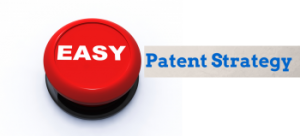As 2016 begins, I am entering my 8th year(!) of writing about IP strategy insights from a business value creation perspective, both here on my IPMaximizerBlog.com and, more recently, on LinkedIn.
While there were quite a few IP lawyers writing blogs in 2008, no one else was then writing about IP strategy.

Today, there are even more IP lawyers writing blogs about IP law, but still almost none writing that address IP strategy topics that are meaningful outside of the IP monetization and large IP





